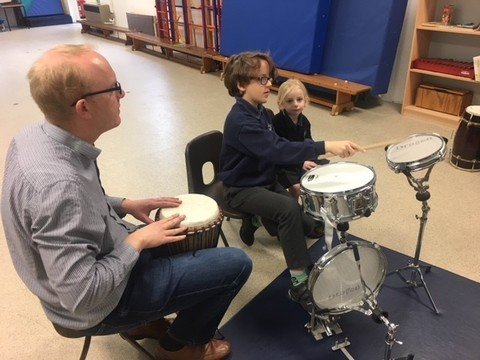 Being a Musician
Being a Musician
Constructor of imagination: experimenting, methodical, consistent, energetic, passionate
Intent
What is the point of being a Musician?
Music is a universal language that embodies one of the highest forms of creativity. It has the capacity to improve and enrich children’s lives. Our children learn to appreciate music and have many opportunities to listen to, compose and perform their own music. A high-quality music education should engage and inspire pupils to develop a love of music and their talent as musicians, and so increase their self-confidence, creativity and sense of achievement. As pupils progress, they should develop a critical engagement with music, allowing them to compose, and to listen with discrimination to the best in the musical canon.
The aims of being a Musician are:
- perform, listen to, review and evaluate music across a range of historical periods, genres, styles and traditions, including the works of the great composers and musicians
- learn to sing and to use their voices, to create and compose music on their own and with others, have the opportunity to learn a musical instrument, use technology appropriately and have the opportunity to progress to the next level of musical excellence
- understand and explore how music is created, produced and communicated, including through the inter-related dimensions: pitch, duration, dynamics, tempo, timbre, texture, structure and appropriate musical notations
Implementation
In order to develop the children's performance skills, we aim to get out into the community as often as we can to perform. For example, we sang at the Donhead’s Jubilee Celebration and the local dog show and we take part in school festivals when possible.
Drawing upon the principles of the musical program Charanga, teachers are able to produce inclusive lessons for all children to access the musical curriculum in a fun and engaging way, further promoting a love of learning. Teachers deliver music following the Charanga programme, designed specifically for the teaching of music in primary schools. Charanga lessons are planned in sequences to provide children with the opportunities to review, remember, deepen and apply their understanding. The elements of music are taught in classroom lessons so that children are able to use some of the language of music to dissect it, and understand how it is made, played, appreciated and analysed. In the classroom, children learn how to play the recorder, the guitar and a variety of percussion instruments. Playing various instruments enables children to use a range of methods to create notes, as well as how to read basic music notation. They also learn how to compose, focusing on different dimensions of music, which in turn feeds their understanding when listening, playing, or analysing music. Composing or performing using body percussion and vocal sounds is also part of the curriculum, which develops the understanding of musical elements without the added complexity of an instrument.
We have invited a wide range of musicians into school including rock guitarists, pianists, a wind quintet and a saxophonist and we perform to residents at a local nursing home annually.
We also have peripatetic music teachers available and our musicians enjoy performing in assemblies and at some of our special services throughout the year.
'Music of the week' has been introduced to encourage wider appreciation and awareness of different genres and composers. These will be introduced during assemblies and reflected upon in class.
Impact
Children's knowledge of and awareness of different genres of music is enhanced
Children are able to enjoy music in as many ways as they choose, either through listening, creating or performing.
They are able to break down music and identify different parts,
Children at Ludwell are given opportunity to aspire and know how to further develop their skills as they grow up.















